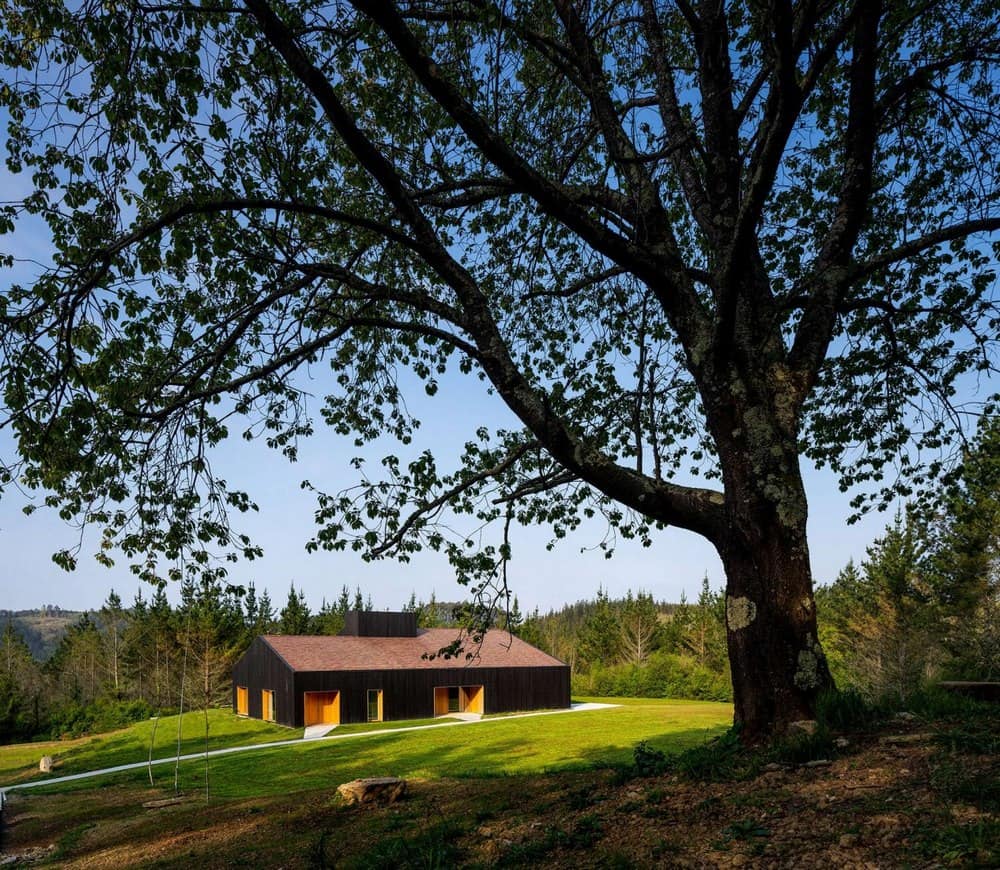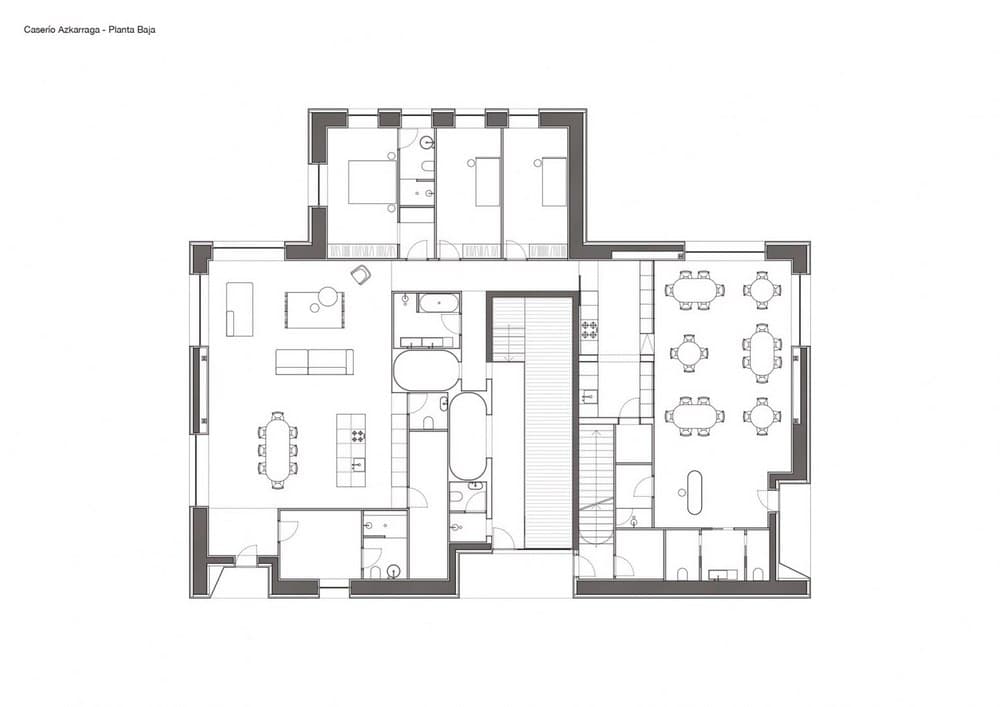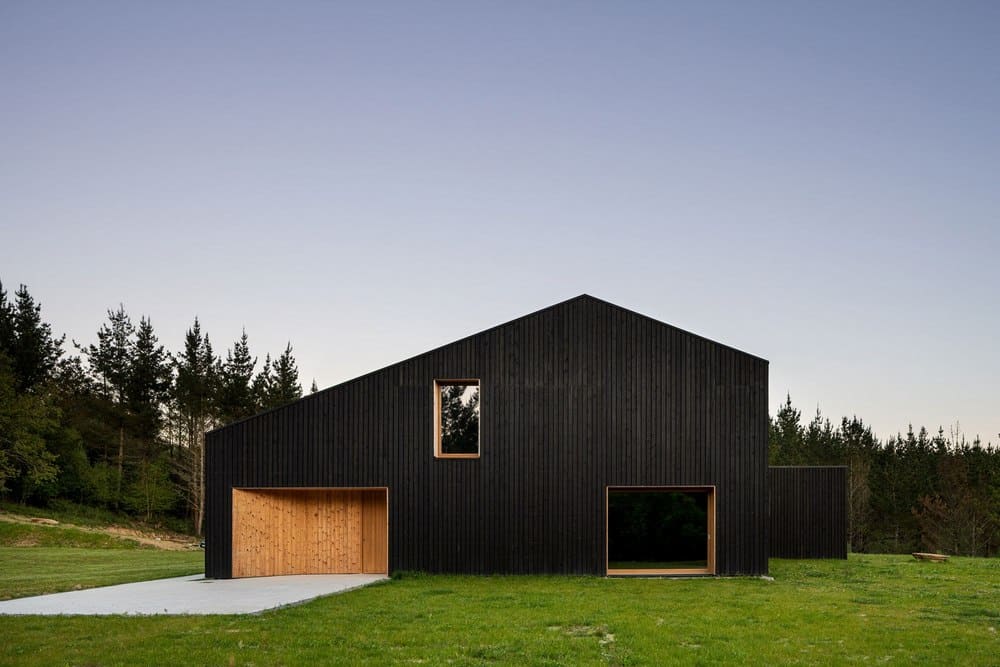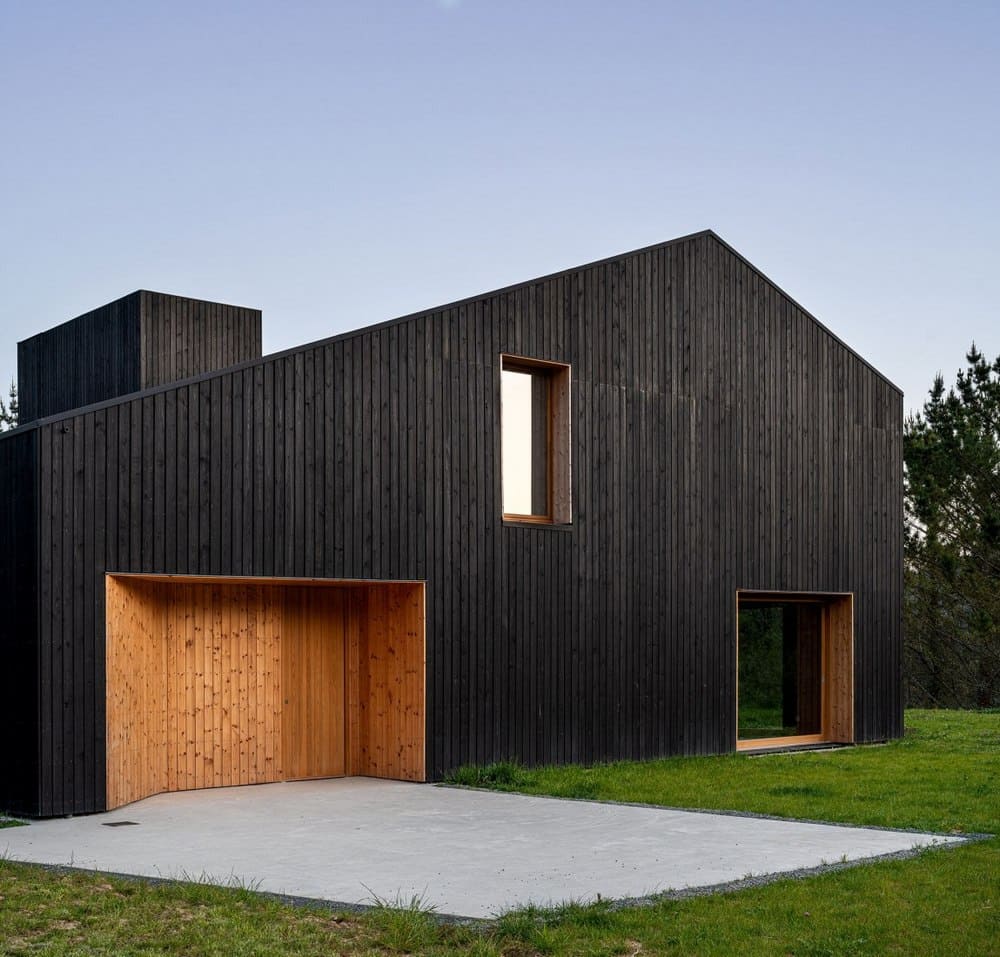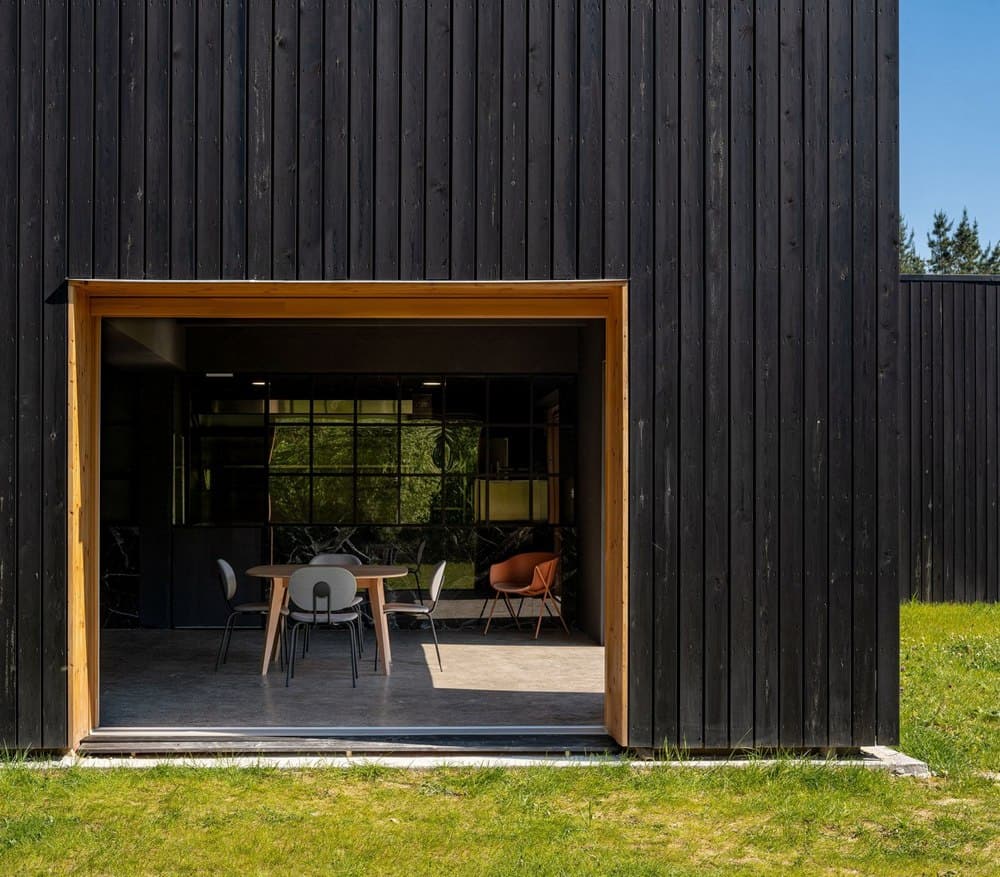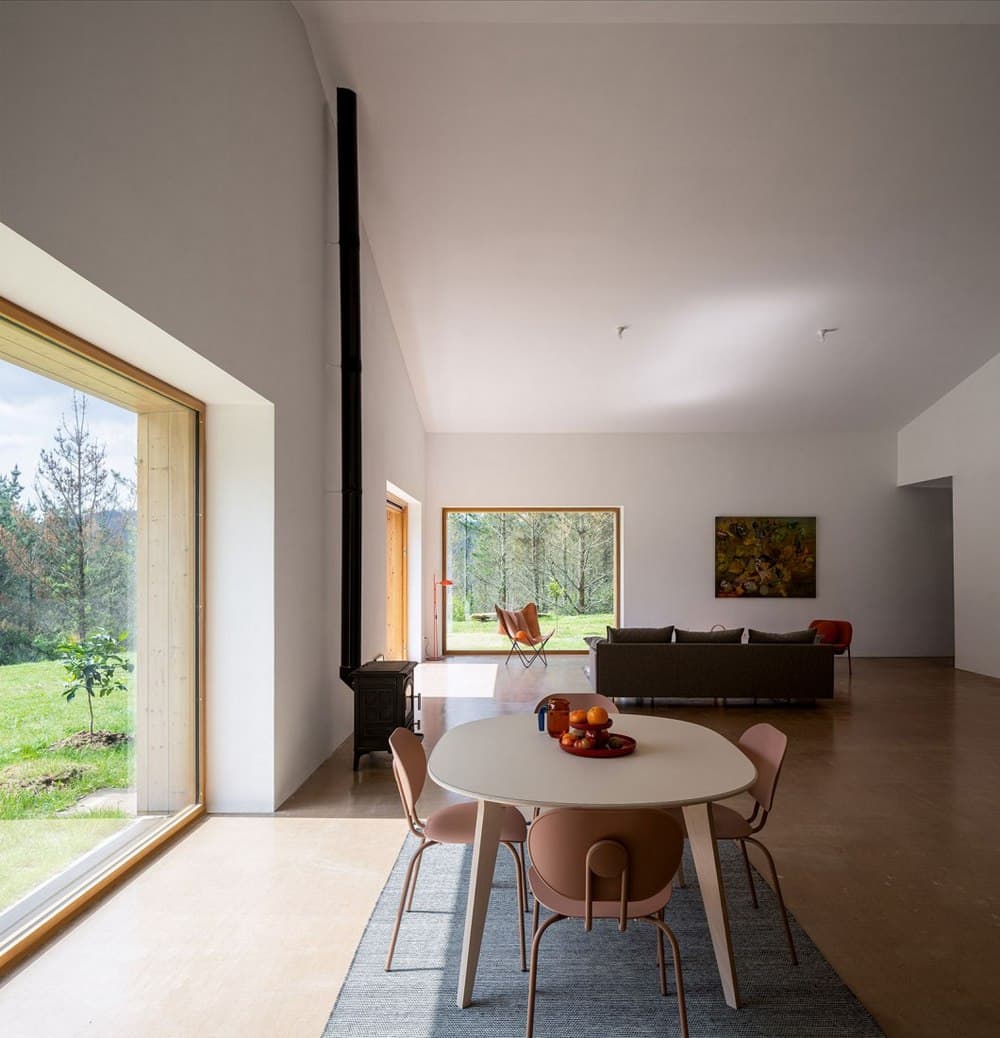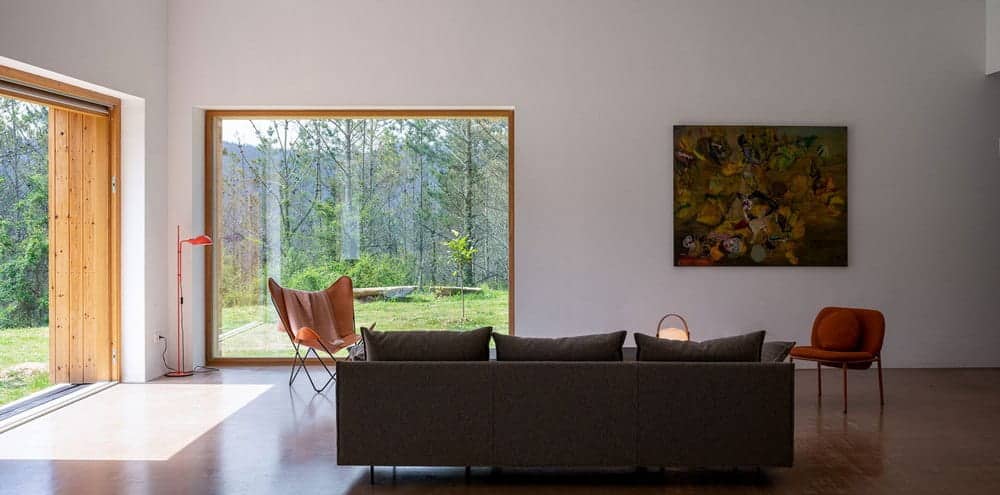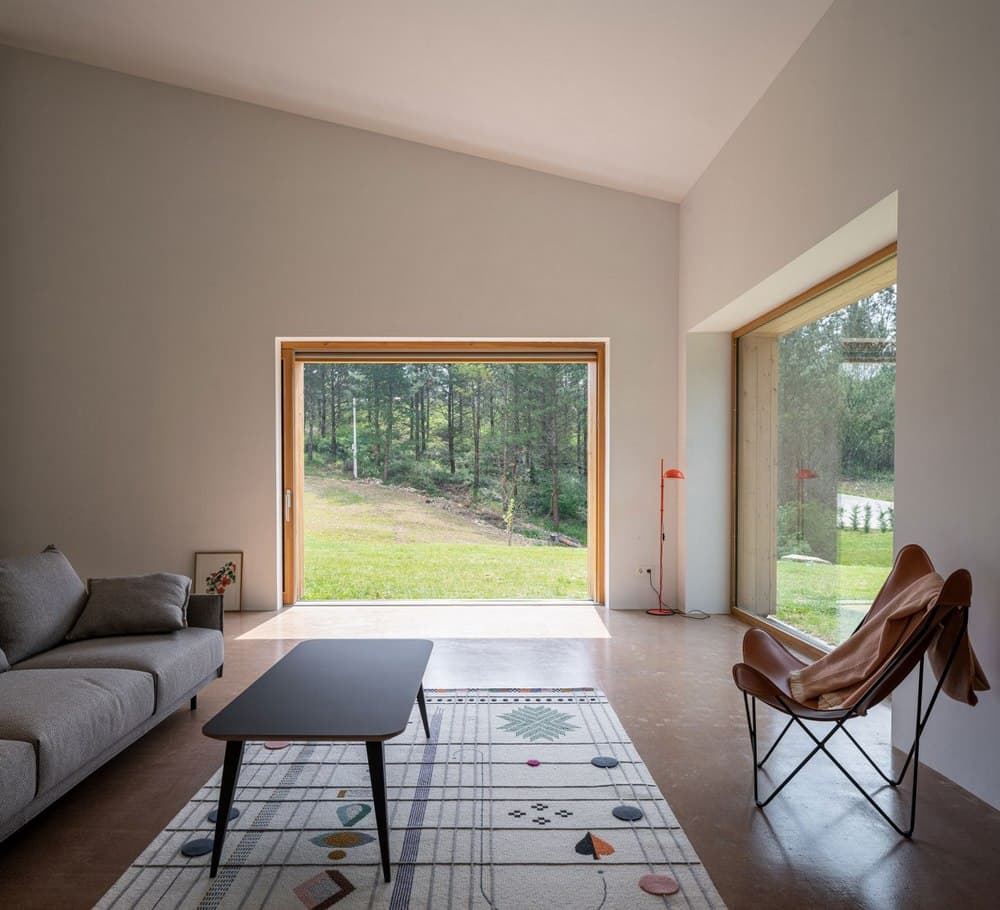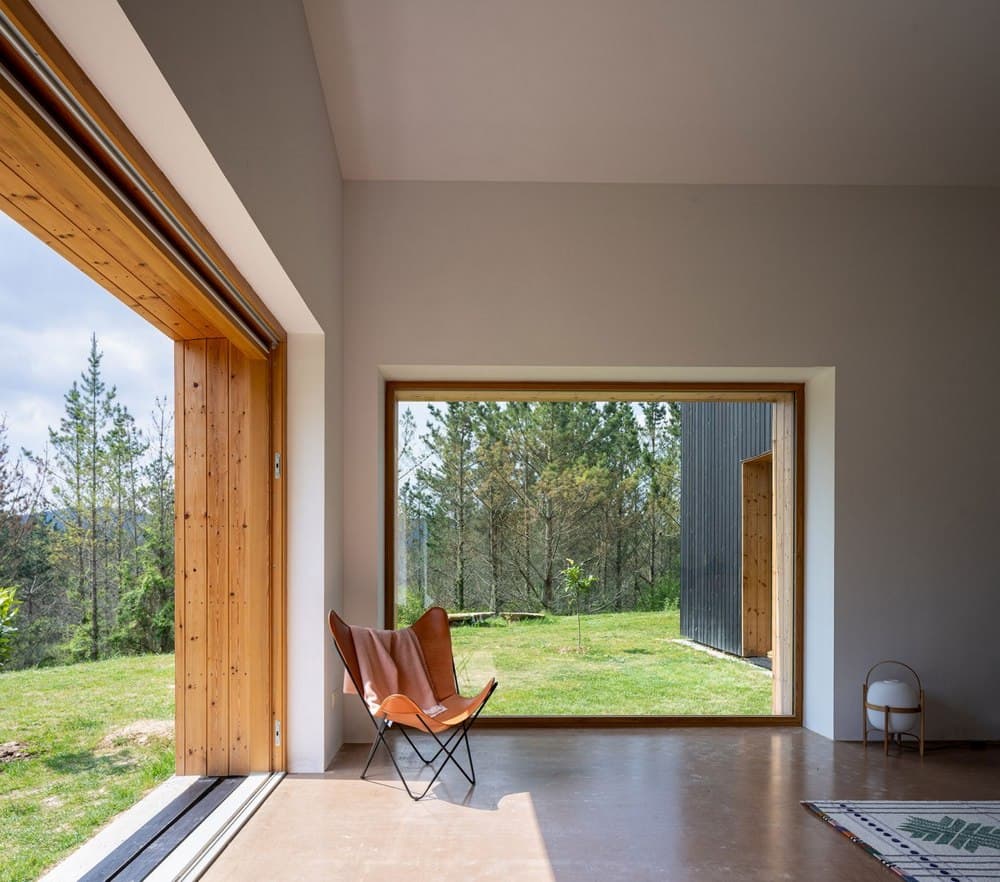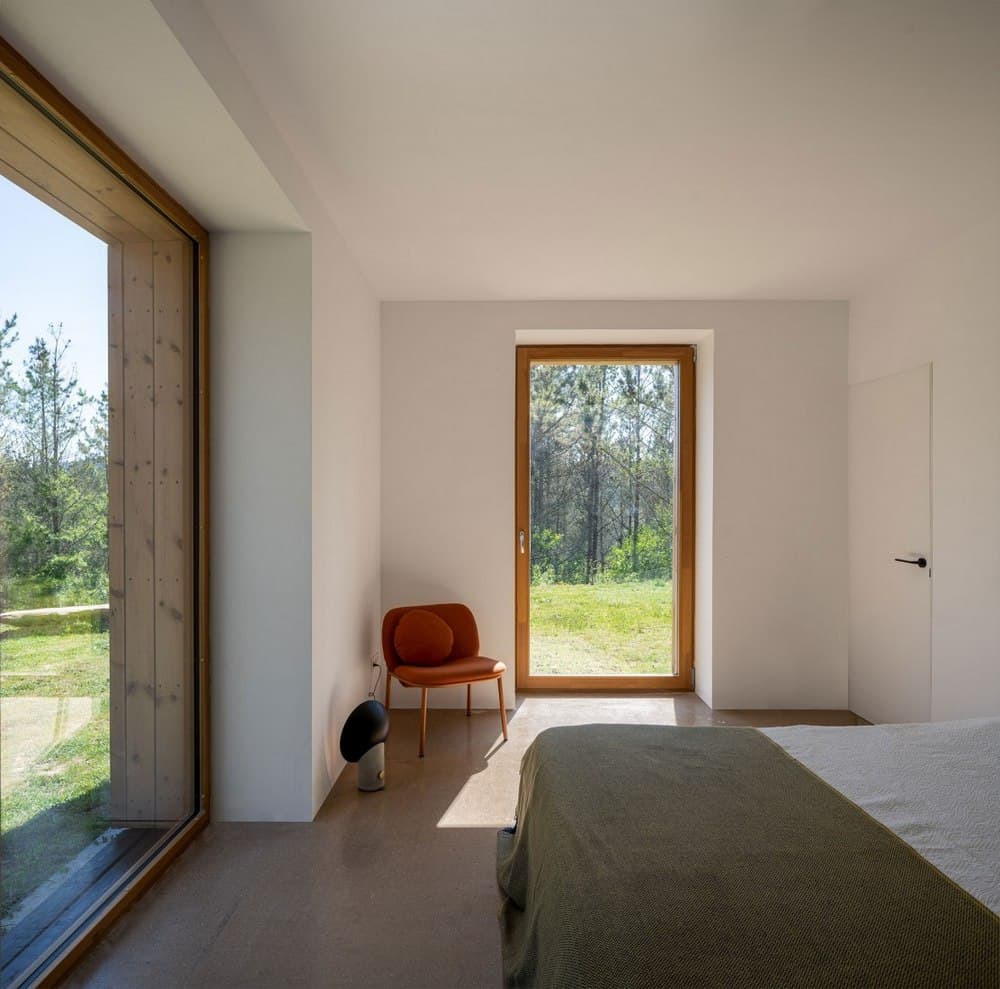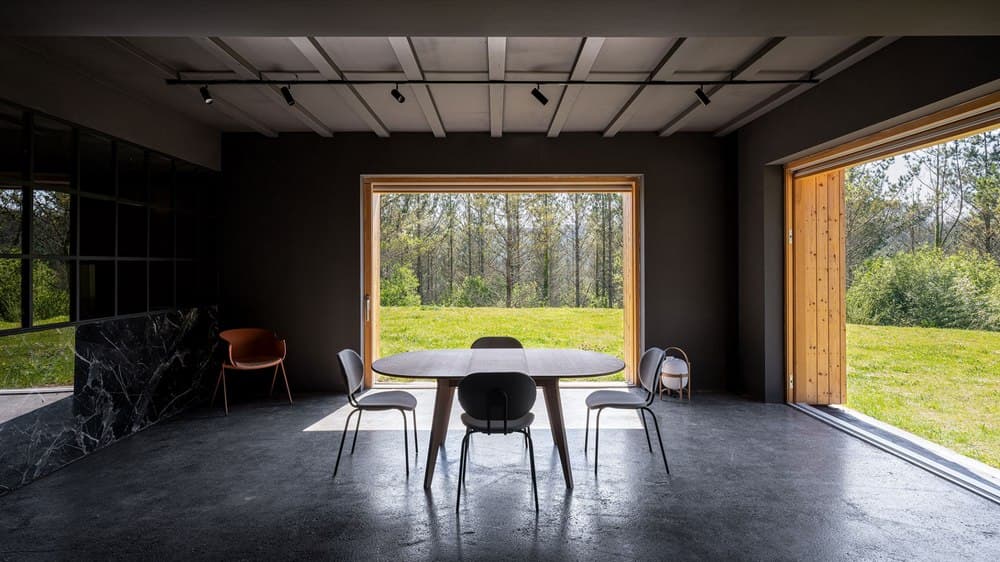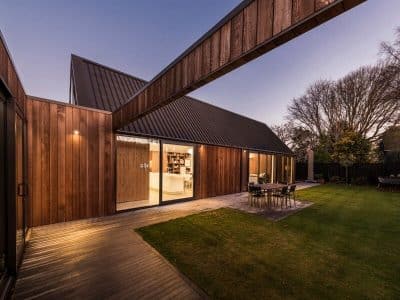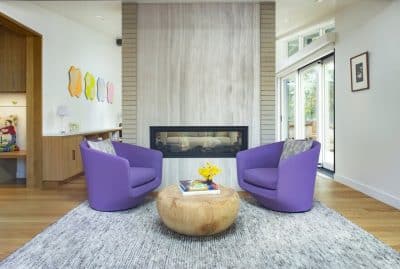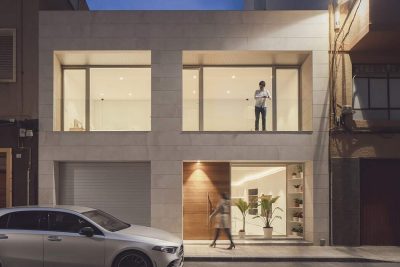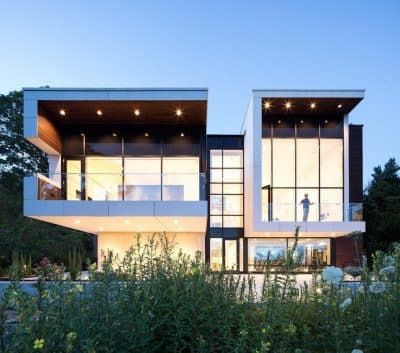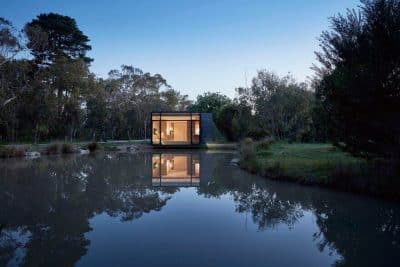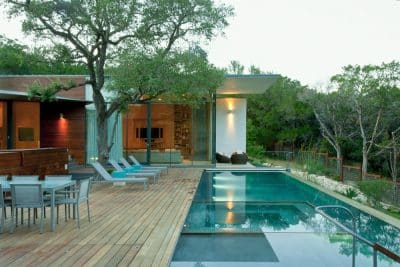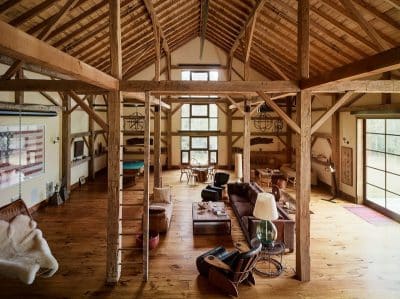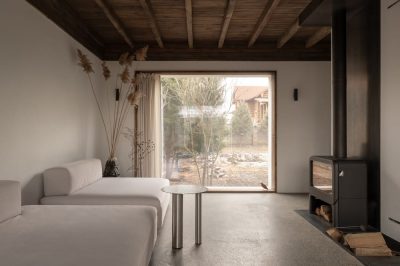Project: Caserío Azkarraga Farmhouse
Architects: BABELstudio, BONADONA Arquitectura
Location: Aldana, Bizkaia, Basque Country, Spain
Completed 2021
Photo Credits: Biderbost Photo
Located on a remote hillside between the Urkiola natural park and the Urdaibai biosphere reserve, the projects site is found slightly set apart from a cluster of historic farmhouses of the Barrio Aldana, a nucleus of listed buildings. The reconstruction of the former Caserío Azkarraga Farmhouse by BABELstudio accommodates three different yet interrelated uses on a plot previously occupied by a two-storey stone house and a number of outbuildings. The mid 19th century original building and its more recent, single-storey extension were found in ruins with only the perimetral, partially up to one-metre-deep masonry walls possible to preserve. The roof structure, as well as the internal structural elements, were encountered collapsed due to the building being long-term abandoned.
Building restrictions obliged to maintain the original footprint of the building, including the annex volume, but allowed substantial modifications in building height, façade openings and selection of materials.
Being the building in ruins and having – although situated in a listed area – having a certain freedom in terms of design and material, the project of ‘reconstruction’ presented an opportunity to restore a typical landscape by removing all conflicting architectural features. The projects design is presenting itself as a contemporary, minimalist architecture that integrates itself into the formal, volumetric aspects of its architectural context.
The projects brief was to find a suitable design solution for the new home and retreat of the clients – a chef formerly based in Bilbao running a renowned restaurant – his wife and business partner their three young children. In addition, a new restaurant – La Revelía – dedicated to regional cuisine and local products and an adjoined agrotourism had to be integrated in one compact volume.
Due to the poor condition of the perimetral stone walls at the height of the first floor, the decision was to deconstruct this part of the remaining building and to organise the spatial requirements predominantly on a single level, occupied by the residential unit and the restaurant. Solely the agrotourism is distributed on a – in surface area largely reduced – second level. By reducing the buildings volume, due to the existing structural conditions and the spatial organisation achieved by the design, the Caserío Azkarraga Farmhouse references the formal and volumetric appearance of the local historic farmhouses with their characteristic proportions.
The new project takes over the external structure and load transfer of the original building. Minimising the new structural elements, a single in situ concrete wall is introduced in the centre of the ground floor, containing the interior swimming pool basin. Besides its structural function, the central wall element organises the extensive program on ground floor, separating the uses of the residential unit from those of the restaurant, while providing access to agrotourism on the first floor.
A generous double-height open space accommodates the day area consisting open kitchen alongside a dining and a living area, three large-format openings with in-wall integrated sliding doors allow for a spatial continuity between the interior and exterior. The night area, consisting of master suite with bedroom, wardrobe and bathroom and two further single bedrooms, is situated in the attached volume. Each unit has direct access to the surrounding garden. As it was decided in the design process to maintain the attached volume legible as such, a terrace could be integrated on its flat roof, providing a spacious outside area to the first floor agrotourism. In the centre of the ground floor is located a spa area with swimming pool and sauna, which, together with the structural concrete wall, acts as a hinge between the residential and restaurant uses.
In the restaurant, two additional large-sized openings in the southwest corner provide the fluid transition between the interior dining area and the encircling nature, where a vegetable garden is located for direct use by the restaurant. In contrast to the residential part, the interior of the restaurant is kept in dark shades – black wall finishes and continuous terrazzo flooring – the large openings framing the landscape like a canvas. The restaurants kitchen is designed as an integrated part of the dining room, separated by a transparent enclosure of a custom steel/glass frame on a marble base, making the preparation of the served dishes visible and part of the experience.
The constructive simplicity of the existing building served as a reference for the projected constructive solutions. The exterior wall consists of a ventilated façade of black stained pinewood wrapped around the original stone walls. The traces of use on the stained and untreated wood are desired and will preserve the buildings elegance and beauty. The entrance niches and façade set-backs are held in natural tone pine wood panels to contrast with the black façade. The structure between the ground floor level and the first floor is resolved with a wooden beam and joist structure, terrazzo flooring in different shades of colour and polishing grades are used on both levels. Marble surfaces has been used for bathrooms, swimming pool and in the restaurants partition wall towards the kitchen. All exterior doors and windows are made of laminated pine wood.
Not just the restaurant, but also construction and operation of the building are intended to be sustainable, using geothermal energy as renewable energy and taking advantage of a natural spring located on the property for the water supply. Wood from the existing pine trees on the plot has also been used for the façade. The decision to reduce the use of materials was guided not only from an aesthetic point of view, but also to simplify the construction of the project. The architecture of the Caserío Azkarraga is conceived with a uniform surface design and a selection of materials to create a calm, elegant and sculptural appearance.

